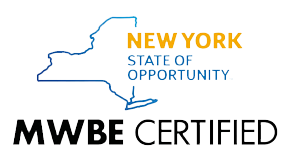We all know the expression: "work smarter, not harder." But most businesses struggle to stay competitive with fast-approaching deadlines and high demand for more content that connects, engages, and converts seamlessly.
As a result, you might be considering Artificial Intelligence (AI) tools that claim to save marketers time and resources by automating the process of generating high-quality content.
Generative AI vs. Traditional AI
Before diving further, let’s first distinguish the differences between generative AI and traditional AI.
- Generative AI combines natural language processing (NLP) with machine learning (ML) technology to generate new and original content via images, videos, audio, and text.
- Traditional AI is designed to recognize patterns and make predictions based on past behaviors.
So although both models benefit your marketing team, generative AI can be incredibly helpful in streamlining content for various purposes—from writing blogs and social media posts to optimizing landing pages and ad campaigns. However, with so many available options, knowing which AI tools best suit your creative team's needs takes considerable time and effort.
In this review, we'll closely examine some of the most popular generative AI tools, evaluating their features and capabilities, to help you add the right platforms to your marketing AI tool kit.
Top Generative AI Tools: Pros & Cons
When deciding on a generative AI tool, it's essential to consider different vital features, such as:
- Ease of use
- Programming languages
- Quality of output
- Uniqueness and originality
To give you a head start, we’ve tested the following platforms to give you a candid review of their pros and cons.
ChatGPT
Perhaps you’ve already played around with this conversational AI model. GPT stands for “Generative Pre-trained Transformer” and outputs human-like responses to questions or requests you input. For example, you could ask ChatGPT to create the first two verses of a song about your dog or ask it to generate 10 talking points for an upcoming presentation on video marketing strategy.
For businesses, however, you can utilize this tool as a chatbot to carry out conversations with your online users in multiple languages, thanks to its NLP. Users can also quickly find answers to FAQs about your products/services, making it a valuable tool for many industries, including finance and health care. And since it already uses pre-trained datasets, you can start using it immediately.
Though we enjoyed testing this tool, we did notice a few scenarios where the output generated was either misleading or sometimes even offensive. As a customer-facing automated tool, this can be alarming, as the last thing you want to do is provide users with false information or comments that they may find inappropriate and associate with your brand.
Therefore, you’ll need to provide this model with a large dataset of customer interactions and train it to respond to customer questions accurately.
Pros of ChatGPT
- The model can generate highly fluent and contextually relevant text responses to various input prompts and questions.
- You can utilize ChatGPT in various applications, such as chatbots, customer support, or content creation.
- ChatGPT can help automate general customer queries, saving your team time while providing a positive online experience.
Cons of ChatGPT
- The model may generate inappropriate, offensive, or misleading responses, especially when trained on biased or unreliable data sources.
- ChatGPT has already raised ethical concerns around the potential misuse or unintended consequences of automating human-like interactions, such as impersonation or manipulation.
- ChatGPT may not fully capture the nuances and complexities of human communication and understanding, especially for highly emotional or nuanced interactions.
Synthesia
We already know that short-form video content is one of the leading marketing trends of 2023. So it’s not surprising that generative AI tools like Synthesia are gaining popularity. Synthesia offers an AI-content platform to help businesses create personalized videos in up to 120 languages.
Features include over 65 built-in avatars and access to custom background music and backdrops. Businesses can also generate company videos from text input or transfer a static PowerPoint presentation into a moving visual.
Though Synthesia makes it easy to get started with video marketing—thanks to its friendly user interface—its intended audience is generally smaller businesses with a limited budget.
In fact, the costs go up dramatically for larger organizations and corporations that require a branded look and functionality that adheres to their policies and brand guidelines. Further, the output is generally less original and more generic, as regardless of your pricing plan, all platforms include pre-set templates.
Therefore, for businesses looking to dip their toes into video marketing, this may be a great beginner platform. However, if you're looking for a long-term video marketing strategy, you'll be limited in terms of customization and original content.
Pros of Synthesia
- This platform creates highly realistic video content with diverse characters and languages.
- It can be used for personalized video content creation, such as targeted ads or customized messaging.
- It offers a user-friendly interface and easy-to-use tools for creating videos quickly.
Cons of Synthesia
- It can be expensive, especially for larger projects or ongoing use.
- The output quality can vary depending on the quality of input data and voiceover recordings.
- This platform offers limited options for customization beyond the pre-set templates.
Copy.ai
Though we'd all love to create engaging content every day, sometimes we need a little help to put the creative wheels in motion. AI-powered content creation tools like Copy.ai position themselves as writing assistants that do all the research and outlining upfront. This gives writers more time to edit the copy to fit the brand's tone of voice and appeal to your target audience.
From writing “how-to” blog articles to creating compelling social media posts, informative case studies, and engaging emails, Copy.ai is designed to give writers the headstart they need to finish writing projects on time.
After playing around with this tool, we enjoyed using its friendly interface and browsing through the platform’s various templates and content generators that included:
- Essay intros and outros
- Tone changer
- CTAs
- Event copy
- Listicles
- Header text
- Etc.
However, we were surprised that some content was less original and more general reworkings of the content found on other websites.
This tool is a great assistant for writers to brainstorm ideas and find inspiration for titles, headers, and talking points; however, you shouldn't view it as a content generator for writing a blog article, landing page, or press release. Furthermore, we did notice that the content generated required an extensive editorial overview to identify inaccurate and misleading information.
Pros of Copy.ai
- Copy.ai offers many writing categories and related templates to help brainstorm and outline diverse writing projects.
- The tool can generate content quickly and easily from the descriptions, keywords, and directions you provide.
- It can be used for various content types, including marketing copy, social media posts, and product descriptions.
Cons of Copy.ai
- It may only sometimes produce the most original or creative content.
- Its ability to understand nuance, tone, and context can be limited.
- The tool sometimes generates false or misleading information that requires extensive editorial review.
DALL·E 2
Made by Open AI, the creators of ChatGPT, this automated tool allows you to create realistic images and art from the descriptions you provide.
The process is fairly simple.
First, you input a description of what you want to see (e.g., a raccoon playing tennis at Wimbledon in the 1990s), and then the system generates a stunning visual output of the data you entered.
Using this AI system, you can edit existing images to add or remove elements based on your input. DALL·E 2 is free up to a limited number of credits. After that, you can upgrade to receive additional credits.
This tool is easy to use and helps streamline images for social media posts, blog articles, product ads, and other brand media. However, the quality of output can vary depending on the availability of relevant training data. Therefore, you’ll want to use this tool for generating static images only.
Pros of DALL·E 2
- The tool can generate highly creative and original images using various objects and concepts based on text input.
- Businesses can use DALL·E 2 for many applications, such as creating illustrations, product designs, or visual aids for presentations.
- The model provides a powerful, flexible interface for generating custom images with specific attributes and parameters.
Cons of DALL·E 2
- The tool is limited to generating static images only; therefore, it’s unsuitable for more complex or interactive media.
- The quality of output varies depending on the specificity of input text and the availability of relevant training data.
- As with ChatGPT, DALL·E 2 has raised ethical concerns around the potential misuse or unintended consequences of generating images automatically.
Descript
Most creators love making great content to share online with their customers and followers; however, the editing process can typically put projects on hold or stop campaigns entirely.
Generative AI tools like Descript work to eliminate the technical expertise generally needed to edit audio and video content; therefore, marketers have more time to create, edit, and post content faster and easier.
Descript offers tools that allow users to edit videos and podcasts and instantly transcribe audio into text to repurpose later. Teams can also collaborate on projects and publish their work using its all-in-one platform.
You can also add audio to a podcast without re-recording. Using its overdub feature—an AI tool that clones your voice—you can add audio via text. This feature comes in handy if you forget to include an important comment or want to clarify a key point in your dialogue.
Descript is still generally new, which means there are a few kinks to keep an eye on, especially when transcribing audio to text, so reviewing your content thoroughly before publication is essential.
Pros of Descript
- Descript offers a wide range of editing and enhancing audio and video content tools, including transcription, sound design, and collaboration features.
- Content creators can use this tool for various content types, including podcasts, interviews, and presentations.
- Teams can easily collaborate on the same projects, share comments, assign tasks, and edit.
Cons of Descript
- Descript does not always produce the most accurate transcriptions or captions.
- The tool is limited in understanding nuance, tone, and context, especially for non-native speakers or accents.
- The tool requires an editorial process to identify errors in translation.
The Future of Generative AI
AI aims to help us streamline processes, affording us more time to focus on hitting our marketing KPIs. With that said, it’s important to note that generative AI tools are intended to function as “assistants,” not replace the creatives working alongside them.
Neil Patel, a top-selling digital marketing guru, said it best: “... AI tools will save you time, but they do require human intervention. You need a human touch to make the content better…” (Excerpt from his article “How ChatGPT, Bard, and AI Will Impact Search”).
Based on our analysis of the tools above, we can only agree with Patel’s conclusion.
Want More Marketing Trends and Resources?
Stay connected to our blog for more marketing tips, trends, and strategies to grow your business and reach your target audience.
If you'd like to learn more about our capabilities, or how we can help boost your brand's outreach with competitive video, social, or paid marketing and media services, contact us for a consultation.

